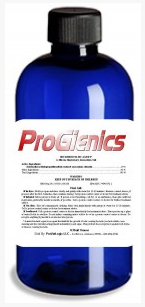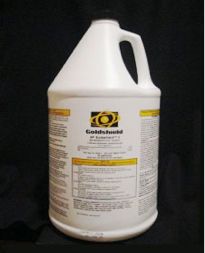Id like to sincerely apologize to readers of the print version of ourrecent mildew preventer testwho may have become confused when theywent looking for the Best Choice product. Ill try to explain what happened and set the record straight to avoid any further confusion. The product we tested was Goldshield 5, an antimicrobial (also called a microbiostat) based on a formula patented by Emory University and used primarily in hospitals and other public buildings. We diluted this product to a concentration that was equivalent to the companys ready-to-use spray-dispenser formula, Goldshield 75. The product is available in 32-ounce squirt bottles here.
If you happened to buy a product called Elite Marine Shield (a product mistakenly named in our print article) after reading the article, I want to be clear that we have not yet tested it. Elite Marine Shield claims its product relies on similar chemistry to Goldshield; Goldshield claims there’s is fundamentally different. Regardless, we wont know how it compares until we complete testing.
Elite Marine Shields product, ProGienics, and Goldshield are both silicone quarternary ammonium salt compounds. Both are related to Dow Cornings original anti-microbial formulas 5700 and 5772, which, until fairly recently, was distributed by a spin-off company Aegis Environmental Management in Midland, Mich. which is now a part of Microban International. Goldshield claims is that its product is unique because it remains chemically stable in water when others don’t. The video above explains how these chemicals work (wait about 30 seconds for the audio to start).

Quaternary ammonium compounds arent just sprayed onto surfaces; they are manufactured into products ranging from plastics and textiles to building materials and electronics. If you wear socks, chances are youve worn Aegis or some chemical variation, all of which must be registered with the Environmental Protection Agency as pesticides. The website for AegissNew Zealand licensee offers some background on Aegis, and Goldshields website explains how its product improved upon this formula. In the U.S., the current Aegis license holder is Microban.
Here are excerpts from a 2002 article in Textile World regarding silicone-based products.
“The AEGIS Microbe-Shield treatment is based on quaternary silicones like 3-trimethoxy-silylpropyl -dimethyloctadecyl ammonium chloride, which become affixed to the surface of the fibers. The quaternary silicones marketed by AEGIS Environmental Management, Midland, Mich., have been used successfully and safely by the textile industry since the mid-1970s. The products are manufactured by Dow Corning Corp., also based in Midland, and were first sold under the Sylgard trademark.
“One of the first successful uses of this product was Dow Cornings 5700 Antimicrobial product for athletic socks produced by Greensboro, N.C.-based Burlington Industries Sock Division . . .
“Application of the silicone-based antimicrobials is usually made from aqueous solutions, and they can be applied by padding, spraying and foam finishing. Upon removal of the water, the nonvolatile silane forms covalent bonds with the fabric, which results in excellent durability.”
Given the growing concerns about mold allergies, super-bacteria, and public health, the anti-microbe business is lucrative. For this reason, a number of companies have been tweaking the quartenary silicones to do everything from stamp out MRSA in athetics to combat salmonella in horse stables. As far as I can tell, Emory University has licensed its unique quaternary ammonium compounds to only two companies Goldshield and Duralast. According to Goldshield, the latter company is no longer in marketing its product.

So, how did Goldshield mistakenly become Elite Marine Shield in the pages of Practical Sailor? Practical Sailor has a long history of testing new products-and those still in development-from creative entrepreneurs. Such was the case with Goldshield. We were contacted by a physician and boat owner who was familiar with Goldshields effectiveness as a microbiostat in hospitals and other environments. He said hed been having great results with the experimentalGoldshieldproduct at home and on his boat, and he believed it would be a good product for boat owners, especially those who put their boats into storage. Would we be interested in testing it?
Of course, we said yes, but by the time our review was ready for print, the promised marine version of Goldshield (with a new name and available in more convenient sizes) still did not have a name. Initially, the doctor-entrepreneur called the new product Marine Shield and this was mistakenly confirmed during my final fact-checking with our tester-and from thence, the confusion. I was told earlier this week (after the print edition had been published) that there will be no name change, the Goldshield product aimed at the marine market will keep the name Goldshield 75.
I was responsible for editing the review and should have caught this mistake, so the blame is mine. As my Great Depression-hardened grandfather always said, we must lie in the bed we make. If you aren’t happy with either product, if you are still confused, or if you just want hurl insults in my general direction Monty Python-style you can contact me directly at [email protected].
The founder of Elite Marine Shield has politely agreed to let unhappy PS readers return the product. She said, however, that based on her experience with her quaternary ammonium product in the Great Lakes region-where it is most widely marketed-she was confident that it works as advertised and that it will do well in our follow-up tests. Goldshield is equally confident that its product will do better-particularly over extended periods of several months.
There is no question that Goldshield 75 helps defeat mold and mildew. It held up to our rigorous testing better than any other type of store-bought mildew preventative. Whether other quats like Elite Marine Shield can do as well remains to be answered.
Again, I sincerely apologize for any inconvenience to our readers and to the makers of Goldshield 75. Personally, before plunking down $30 on a spray bottle, I would look at first trying some of our super-cheap, and surprisingly effective homemade remedies and combine these with ventilation or dehumidifiers to prevent mildew during winter storage. However, if you are buttoning your boat down for winter and are waging a constant battle against mildew, Goldshield 75 has proven very effective.
Here are some more comments from Goldshield:
“Quaternary ammonium compounds (quats) have been around for decades. They work by covalently bonding to the substrate (fiberglass, plastic, fabric, etc.) thus providing a surface covering that disrupts the cell membrane of approaching organisms through an electro-chemical process. This kills or renders the organism inert. All quats work in this fashion. The problem with all these quats was the stability of the compound in solution. They tended to react chemically with water forming larger molecules that truly offered poor covalent bonding adhesion. They would perform fairly well in the short term but provided no long-term residual protection. Emory scientists were the first to find a way to stabilize these types of quats in water (prevent the reaction with water), thus rendering the creation of a small molecule that would create an incredibly strong covalent bond to the substrate to which it is applied which bond would last for months, and depending upon conditions, for years. Emory patented its newly discovered chemistry and exclusively licensed it to Goldshield. This compound is Goldshields GS75 (and it GS5 concentrate).”







































